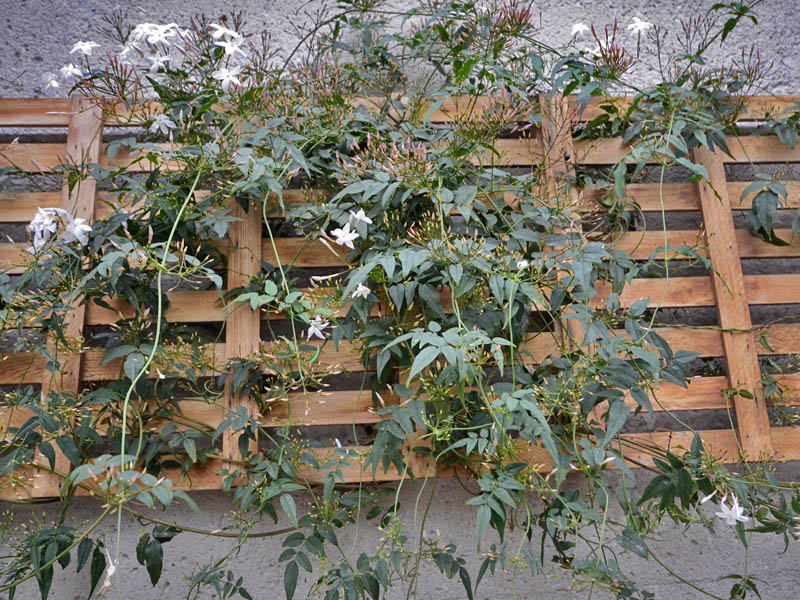| General Description | Jasminum polyanthum or Many-Flowered Jasmine is an evergreen twiner with dark green, pinnate leaves and axillary clusters of fragrant, tubular, white flowers. |
| Landscape | Makes a low-maintenance climber on a trellis, wall or tree. Also good for containers or in city and courtyard gardens. |
| Propagation | By semi-hardwood cuttings or layering in autumn. |
| Cultivation | Grow in a frost-free, sheltered location, full sun to part shade, in well-drained soil. When growing under glass, use bright, filtered light and compost containing loam. Thin excess growth after flowering. |
| Pests | Possible pests include: aphids, mealybugs and scale insects. No diseases to note. |
| Notable Specimens | The Royal Botanical Gardens, Burlington, Ontario, Canada. |
| Flower/Leaf Bud Description | Pale pink, narrow, pointed. |
| Leaf Description | Pinnate, long and narrow, dark green. |
| Flower Description | Very fragrant, long, tube-shaped, white, five-petalled, star-like, up to 2 cm in diameter, in axillary, loose branching clusters. |



